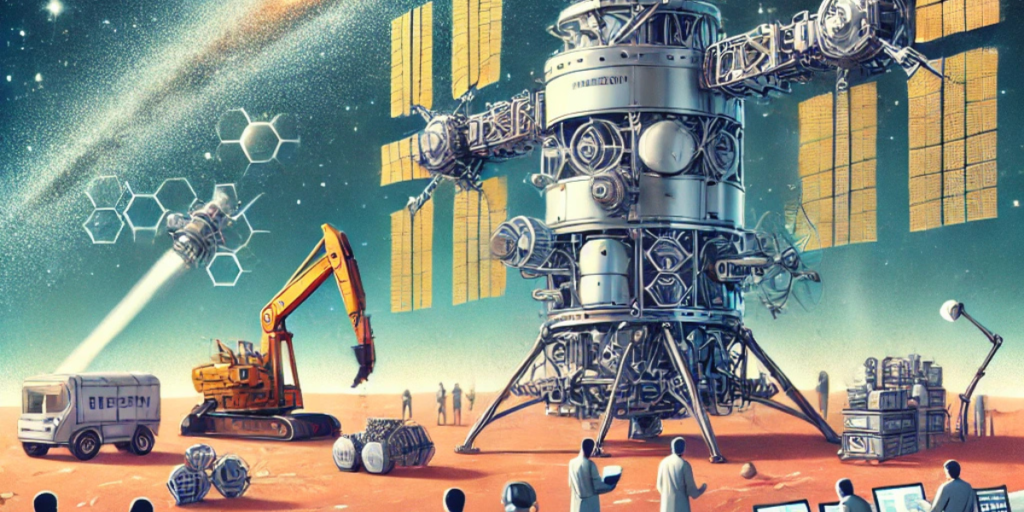Extraterrestrial exploration has long been a topic of fascination and curiosity, and in recent years, the efforts to explore planets beyond Earth have seen unprecedented growth. Katz Martian is not only a name but a new vision in the field of space exploration, signaling a paradigm shift in how humanity approaches the age-old question: are we alone in the universe? This article delves into the world of Katz Martian, exploring the technological advancements, scientific methods, and the broader impact this venture has on our understanding of life in the cosmos.
1. The Rise of Katz Martian in Extraterrestrial Exploration
Katz Martian, though a relatively new player in space research, has quickly garnered the attention of scientists, space enthusiasts, and the general public alike. Unlike traditional exploration missions, Katz Martian places a strong emphasis on adaptability, cost-efficiency, and a streamlined approach to interplanetary missions. This model has inspired a fresh wave of enthusiasm for space exploration, breaking down barriers that once limited scientific institutions and researchers from pursuing ambitious space projects.
2. Katz Martian’s Mission: Pushing Boundaries Beyond Mars
While Mars remains a central target for many space agencies, Katz Martian’s mission scope extends beyond the Red Planet, with intentions to explore various celestial bodies within and potentially beyond our solar system. This broader mission objective is grounded in the belief that focusing solely on Mars could limit discoveries in diverse extraterrestrial environments. Katz Martian’s goal is to study a range of potentially habitable moons, dwarf planets, and even asteroids that could yield clues to extraterrestrial life.
A. The Focus on Water-Rich Moons and Asteroids
Katz Martian’s scientists have identified water-rich moons, such as Jupiter’s Europa and Saturn’s Enceladus, as primary destinations. These moons have captivated researchers because of the potential subsurface oceans that may harbor life. By targeting such regions, Katz Martian is diversifying the locations that could potentially support biological entities.
3. The Science Behind Katz Martian’s Exploration Techniques
To successfully uncover signs of extraterrestrial life, Katz Martian utilizes a blend of cutting-edge technology, advanced algorithms, and next-gen data analysis. Unlike earlier space missions, which relied heavily on limited sensors and hardware, Katz Martian’s approach includes smart software that can interpret and adapt to changing conditions in real-time.
A. Artificial Intelligence in Data Collection and Analysis
Artificial intelligence (AI) plays a pivotal role in Katz Martian’s extraterrestrial missions. The spacecraft and rovers are equipped with self-learning algorithms that analyze environmental data, adapt to alien terrain, and even adjust parameters to optimize resource use. This not only maximizes the mission’s efficiency but also allows data analysis to occur on-site, sending only the most relevant findings back to Earth.
B. High-Resolution Imaging and Spectroscopy
Katz Martian has invested in high-resolution imaging and spectroscopy devices that can capture details at a microscopic level. The hyperspectral imaging allows scientists to identify minerals and organic compounds with greater accuracy, which is essential for understanding the composition of extraterrestrial landscapes.
4. Technological Innovations of Katz Martian
Katz Martian’s mission is made possible through a series of technological innovations designed to withstand the challenges of interplanetary travel. Unlike traditional models, which require extensive human oversight, Katz Martian spacecraft are largely autonomous, which significantly reduces the risks associated with prolonged space travel.
A. Autonomous Navigation Systems
One of the hallmark features of Katz Martian’s technology is its advanced autonomous navigation. The spacecraft is equipped with smart navigation systems that map alien terrains, avoiding potential obstacles without human intervention. This approach is essential for exploring environments like Martian valleys, lunar craters, and the icy surfaces of distant moons.
B. Powering Through Space with Solar and Nuclear Energy
Energy is a critical factor in space missions, and Katz Martian has addressed this by combining solar panels with nuclear power sources. This dual energy approach ensures that the spacecraft remains operational, even when sunlight is scarce or unavailable. The nuclear reactor provides a steady supply of power during the lengthy travel periods between celestial bodies, allowing continuous data collection and analysis.
5. Katz Martian and the Search for Alien Life
At the core of Katz Martian’s mission is the search for alien life, and their approach to this exploration is both ambitious and meticulous. Instead of focusing solely on conditions similar to Earth, Katz Martian scientists are broadening their scope to consider life forms that could survive in extreme, non-Earth-like environments.
A. Life Beyond Carbon-Based Organisms
Traditionally, the search for alien life has focused on carbon-based organisms. However, Katz Martian’s researchers are considering other possibilities, including silicon-based life or other unknown forms that may thrive in high-radiation or low-temperature environments. This open-minded approach vastly increases the potential to discover unique extraterrestrial life.
B. Investigating Extremophiles as a Model for Alien Life
Katz Martian researchers study extremophiles—organisms that live in harsh Earth environments—as a basis for identifying possible alien life. By understanding how these organisms survive extreme heat, cold, or radiation on Earth, scientists can better predict what to look for in extraterrestrial environments.
6. Partnerships and Global Collaborations
The Katz Martian initiative has forged alliances with global space agencies, private companies, and research institutions to maximize its reach and resources. These partnerships bring together diverse expertise, data, and technologies, making the missions more effective and comprehensive.
A. The Role of NASA and ESA in Katz Martian Projects
Both NASA and the European Space Agency (ESA) have collaborated with Katz Martian on multiple projects, providing valuable insights, infrastructure, and shared technology. These partnerships allow Katz Martian to access resources and data that would otherwise require decades of research and development.
B. Private Sector Involvement and Funding
Private sector funding has fueled Katz Martian’s ambitious projects. Partnerships with technology giants have provided financial backing and access to technologies such as AI processors and deep space communication tools, which are essential for interstellar missions.
7. Ethical and Environmental Considerations in Extraterrestrial Exploration
Exploring new worlds comes with a responsibility to minimize harm, both in space and on Earth. Katz Martian’s ethical framework addresses these considerations, ensuring that exploration does not contaminate extraterrestrial ecosystems.
A. Planetary Protection Protocols
Katz Martian adheres to strict planetary protection protocols to avoid biological contamination of alien environments. This approach not only preserves potential ecosystems but also ensures that findings remain uncontaminated by Earth-origin microbes.
B. Sustainable Resource Use
To reduce its environmental impact, Katz Martian employs sustainable materials and energy sources in its equipment. By emphasizing reusability and recycling, the organization minimizes waste and pollution, setting a new standard in space exploration.
8. Public Engagement and Education Initiatives
Katz Martian has made strides to involve the public in its journey, fostering an interest in space through various educational initiatives and outreach programs.
A. Virtual Reality Experiences
Katz Martian offers virtual reality (VR) experiences that allow people to “explore” the planets and moons where missions are active. These VR programs serve as educational tools, immersing participants in the same environments that scientists study.
B. Educational Partnerships with Schools and Universities
Through partnerships with educational institutions, Katz Martian provides students with access to data, simulations, and lectures, inspiring the next generation of space explorers and scientists.
Conclusion
The Katz Martian initiative is more than just a quest to answer the question of alien life—it represents a transformative approach to extraterrestrial exploration. With advanced technologies, global collaborations, and a mission that emphasizes adaptability and sustainability, Katz Martian is setting a new standard for how humanity explores the universe. As Katz Martian continues its journey, it opens a world of possibilities, taking us one step closer to answering some of the most profound questions about our place in the cosmos.






